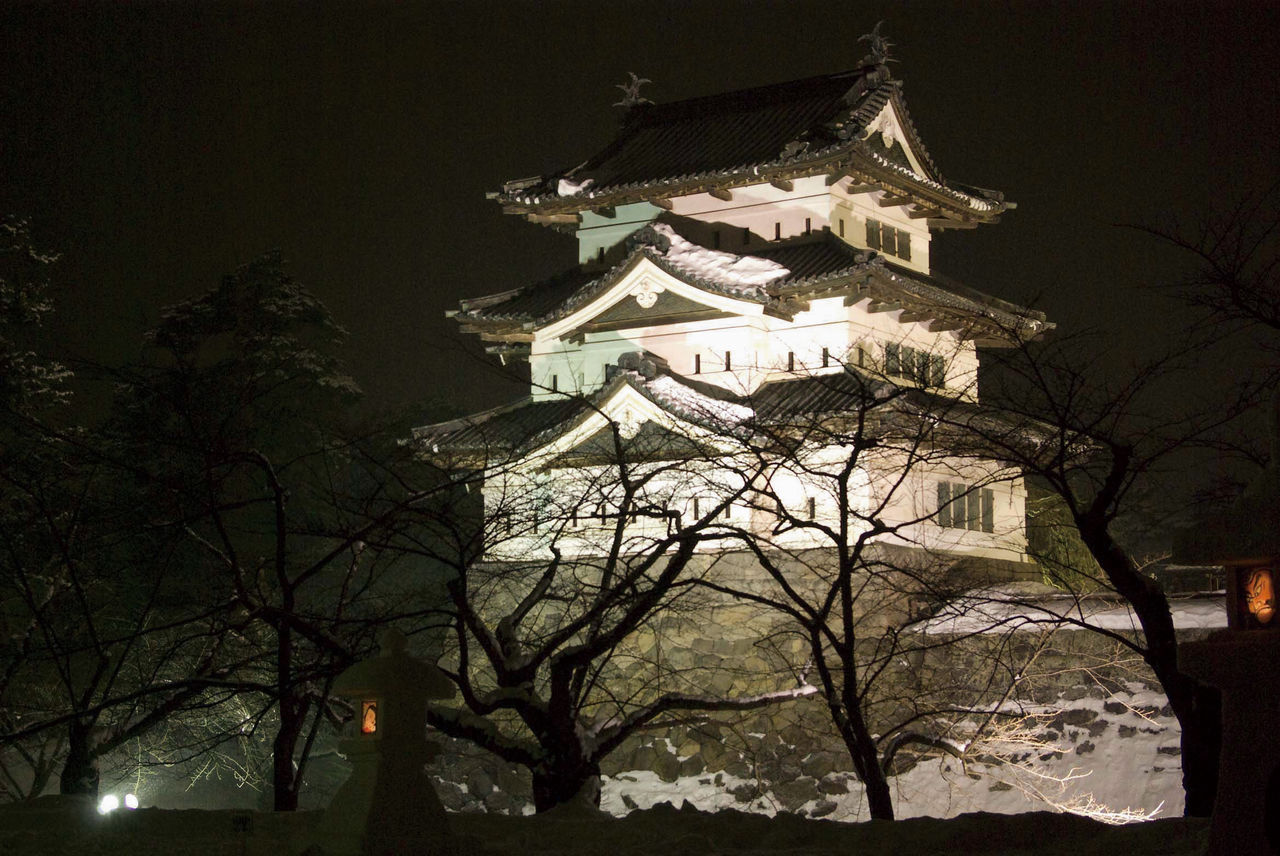
Aomori’s Hirosaki Castle: A Historical Treasure
Guideto Japan
- English
- 日本語
- 简体字
- 繁體字
- Français
- Español
- العربية
- Русский
Hirosaki Castle
 Hirosaki Castle illuminated during the Hirosaki Castle Snow Lantern Festival.
Hirosaki Castle illuminated during the Hirosaki Castle Snow Lantern Festival.
Tsugaru Tamenobu (1550–1607), feudal lord of the Tsugaru domain in what is now western Aomori Prefecture, drew up the plans for Hirosaki Castle shortly after taking control of the province but died before construction got underway. His successor, son Nobuhira (1586–1631), broke ground on the fortress in 1610 and completed the structure the following year. Hirosaki Castle remained in the hands of the Tsugaru clan for 260 years until the Meiji government abolished the system of feudal domains in 1871.
The castle sets at the center of a sprawling grounds encircled by a triple moat with accompanying embankments and six walled enclosures. The central keep, three turrets, and five castle gates contained in the enclosures are designated important cultural treasures. The original castle layout remains intact, and the site was designated a national heritage site in 1952.
The central keep is the last remaining in the Tōhoku region built in the Edo period(1603–1868).
The grounds today make up the spacious Hirosaki Park and are famous as a flower-viewing location in the spring when its many cherry trees are in bloom.
Access: Take the Kōnan 100-yen loop bus from Hirosaki Station to Shiyakushomae (about 15 minutes).
Related article › Aomori in Bloom: The Hirosaki Cherry Blossom Festival
(Banner photo: Hirosaki Castle’s majestic central keep retains its original form. Information courtesy of the Aomori Prefectural Government’s Aptinet Aomori Sightseeing Guide.)